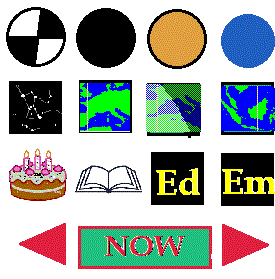|
|
Astrionline.it is an ephemeris generator, to calculate the sky chart for any epoch from 5260 BC to 5690 AD of sure interest both for lovers of astrology and for amateurs of astronomy. Important: For Italian locations, the conversion of the official time into the corresponding Greenwich Mean Time (UT) required for astronomical calculations is done automatically, while for all other countryes, it is up to the user to specify the time regime in use at desired date. In general the choice is between the local time, which is the official standard time of the country, and the summer time which is the summer time, also called daylight saving time, if adopted in that country. The time indicated with LMT (Local Mean Time) is instead the local time of a location before the adoption of the standard meridian, for example, in Italy it was adopted on November 1, 1893. The ecliptic longitudes of the Sun, the Moon and the planets are based on the Solex software by Aldo Vitagliano DE421. The initial page opens with the chart of the sky as seen by the astrologers, that is, with the planets placed in the zodiacal SIGNS, which are parts of ecliptic of 30°, counted from the Vernal Point. Therefore the Aries SIGN goes from 0° -30° the Taurus from 30° -60° the Gemini from 60° -90° etc. By clicking on the symbols of the planets, the placed planets appear, obviously always in correspondence with the ecliptic position in which they are for the date considered, but in this case against the background of the constellations. Obviously, if the date considered is the current one, a planet that is in a certain SIGN is not usually seen in the background of the CONSTELLATION of the same name, but for effect of precession, in the one immediately preceding it. The ecliptic position of the planet is what usually interests astrologers, but it still is a 100% astronomical data. If the planet is above the horizon, selecting horizon you can see how it looks relative to the horizon of that location. Selecting earth you see the point of the Earth that is at that moment closest to the planet, in practice if you were exactly in that point, you would see the planet exactly at the Zenith (above your head). There are also many other buttons, which allow you to view many other things, such as the chart of the sky without ascendant and houses (useful when you ignore the time of birth), the heliocentric horoscope, the globe, and there is also the possibility to read the interpretation of one's natal horoscope or of anyone born in a certain day-month-year-minute and in a certain location. The interpretation is accessed by clicking on interpretation the book-shaped icon, after setting the necessary data and calculating the graph. This interpretation is not very good, and must therefore be read only as curiosity, and ultimately, it does not resemble at all what a real astrologer would be able to give. The site also has features that allow you to create animations, you have to click on the arrows, and to establish the interval that must pass between one image and another, which by default is 10 minutes, you need to change this value and the press the "time step" button. (A day consists of 1440 minutes, a sidereal day of 1436 minutes, a week of 1440 minutes * 7 etc. etc.) For an amateur astronomer, the images obtained by clicking on the Horizon and Sky links should be of particular interest, perhaps using the arrows to see until what time a planet or a star is above the location where you are. New NASA visualization. A few notes on the Accuracy of the Ephemeris (This page needs updating, because the accuracy of the positions of the planets and houses has improved a lot since I wrote it).
